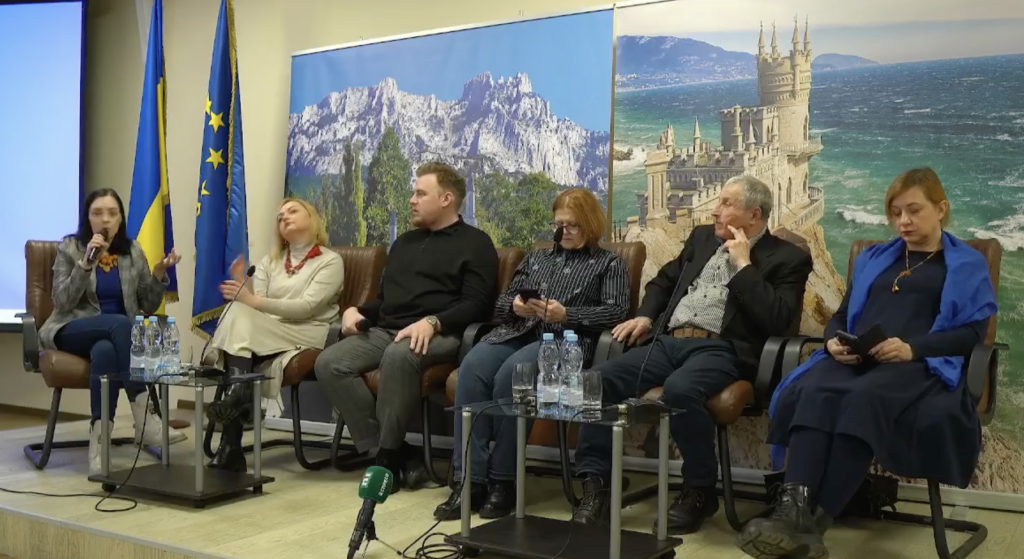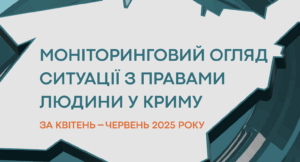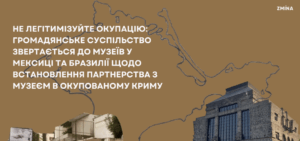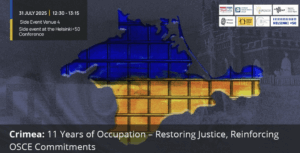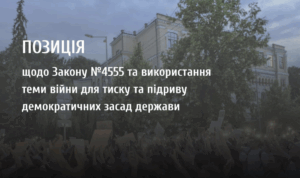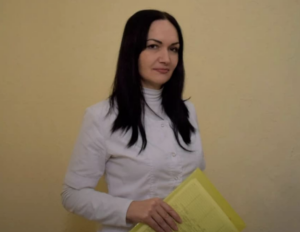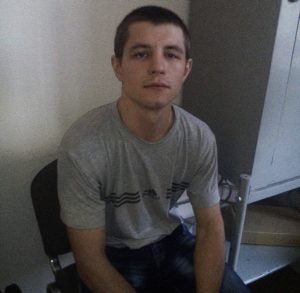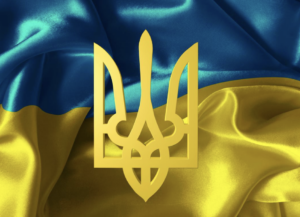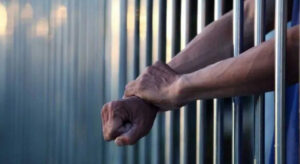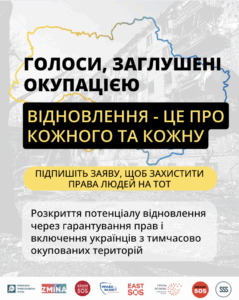Despite the Kremlin’s myths about the “Russian Crimea”, the actions of the Russian military in 2014 caused protests among Crimeans. Since the first days of the Russian invasion, our citizens began to take actions in public against the war and occupation. This was stated by witnesses of the early days of Crimea occupation in 2014 during the public discussion held in Kyiv: “10 Years: Crimean Resistance Behind the Curtain of Silence”.
Ms. Iryna Siedova, a Crimean Human Rights Group researcher, who worked in the Kerch.FM, an independent Kerch media, in 2014, recalled that she could not stand aside, being just observer of these fateful events for the country.
“I realized that I was not just a journalist anymore. I became a civic activist, too. I visited Kyiv several times. I and my colleagues, we were not only publicizing what was happening here, but also participating in person. Then there was a rally in our city, and I came with Ukrainian flag. I was attacked by “bullies” grafted by local police that were likely to have been recruited by the FSB already. My colleagues told me later that they had seen how these “bullies” had been paid by local “authorities”, Ms. Siedova recollected.

The human rights expert mentioned that, with the intimidation started later, no pro-Ukrainian actions had been held in Kerch anymore. These were only pro-Russian rallies that were held, pretending to present local self-defence, local projects.
“But we knew that these were recruited agents of the Russian intelligence, because they came in military trucks. Then they changed to local self-defence uniform, in the Moscow Patriarchate Orthodox churches, because priests of these churches had been also recruited by the FSB. We all in our editorial office were observing this and shooting videos, facing threats many times. However, we were resolute in our attempts to show to the people that these were not some pro-Russian Crimeans speaking at the rallies, this was an actual occupation”, Iryna emphasized. “We were trying to make people aware that it was as early as March 1, 2014, when URALs (Russian military trucks) with Russian licence plates were seen at the ferry service, and that all these so called ‘self-defenders” were speaking in a Moscow accent, though they were not wearing any marks; they were FSB agents”.
Ms. Siedova decided to leave Crimea when the “referendum” had been held, when ‘the threats had reached the point when an unarmed resistance became impossible”.
“We were trying to demonstrate what was happening in Crimea to the world. I wish the world had responded in a proper way. I would also add that using the term “annexation” regarding Crimea is not correct. This would have been annexation if Crimea had voluntarily united with Russia. In fact, this was a military occupation”, Ms. Siedova underlined.
Crimean journalists who, at the hazard of their freedom and lives, were publicizing the 2014 events, and occupation resistance movement members described how Crimeans had been resisting the occupation 10 years ago.
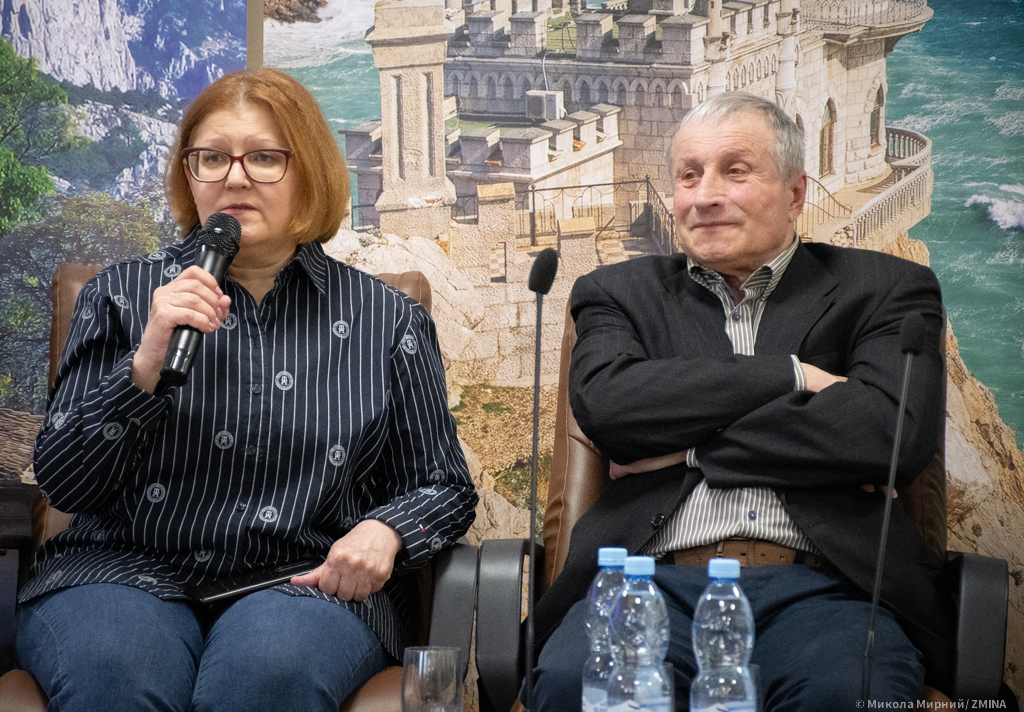
On March 2, 2014, the first action under the conditions of occupation took place at the monument to Taras Shevchenko. March 9, 2014, became another day of March for Ukrainian resistance actions in many cities of the peninsula. Crimeans were bringing flowers and posters with anti-occupation slogans to the monuments to Taras Shevchenko on his birthday. On the same day, Andriy Shchekun and Anatoliy Kovalskyy, co-coordinators of the Euromaidan Crimea movement, and organizers of resistance actions in Crimea, were abducted in Simferopol.
“This was the time when we did not have our TV channel any longer,” Ms. Olena Solonyna, a TV presenter, and a newsperson of BRYZ TV and Radio Broadcasting company of the Ministry of Defense of Ukraine (2005-2016), recalls. “The TV center was taken by force. We were unable to broadcast. But we tried to communicate the truth to our military via the Internet”.
The journalist said that she and her colleagues were threatened and pressured, there were attempts to buy them over.
Russia began to place the information space of the peninsula under its control, while turnskin policemen were targeting their persecution on independent journalists and media that tried to escape this control.
Valentina Samar, editor-in-chief of the Center of Journalistic Investigations, emphasized that the anti-occupation resistance was mainly the civic expression of will, not the resistance of Ukrainian power.
“There are no political bigwigs among us today, just as they were not present at the Maidans in the regions, particularly in Crimea. Few people were there, because there was active pressure, there were actual murders, as it was in Simferopol, Feodosiya, Yalta, Kerch. Even if those people were not activists, but just had different views, they were subject to “neutralization”. And the Russian intelligence and counterintelligence in Crimea was always active in Crimea, facing no obstacles,” Ms. Samar said.
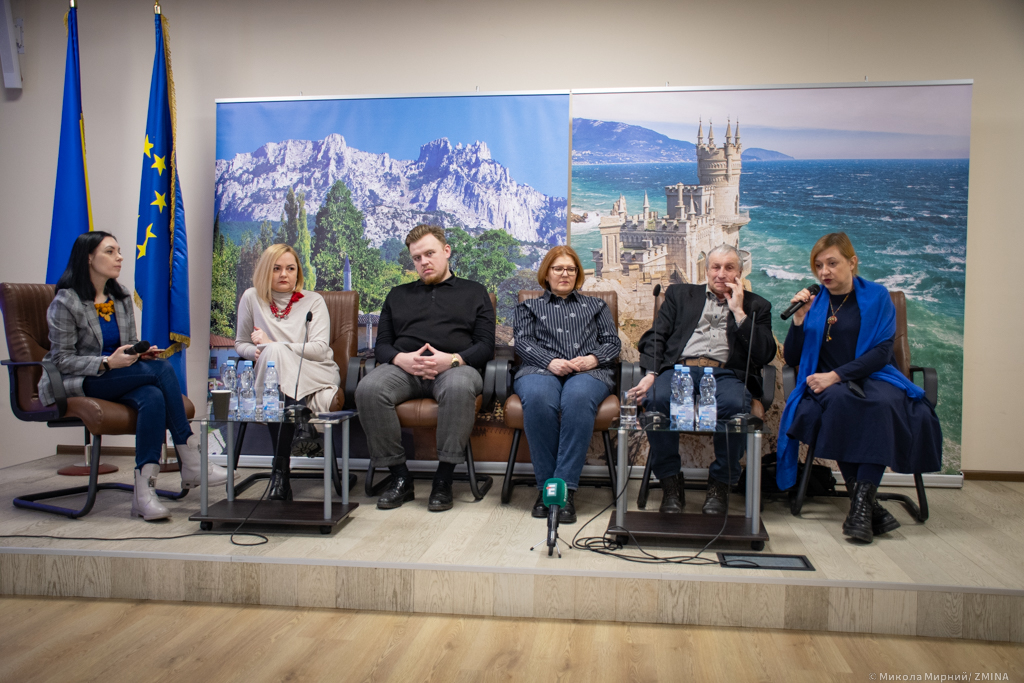
According to the journalist, it was on February 23, 2014, when the Russians seized the power in Sevastopol.
“Unfortunately, none reacted to this. Then the violence export expanded from Sevastopol across the entire Crimea. We may just regret that the Russian Black Sea Navy was not localized in one city, and the Russian military felt free in the peninsula, so it took them a week to institute their control all over Crimea. The resistance was largely of civic nature. I can count Ukrainian politicians who flew in Crimea on the fingers of one hand”, the journalist stated.
She says that only for March 2014, about 100 cases of attacks on journalists were recorded, while for 10 years of occupation, Russia has built up a large-scale repression system against the people who disagree with the occupation of Crimea.
Mykola Semena was the first journalist who stood “the Crimean trial” himself. on September 22, 2017, he was found guilty of calling for a violation of Russian territorial integrity because he had written in his text: “The Russian Federation must return Crimea.”
“Many of us remained in Crimea, but we were not allowed to work, we were pressured, we were forbidden to attend press conferences. I managed to work underground for 2 years. And then I was arrested. It was morally hard to live through all this, though the repressions had just started. I did not think that it would come to complete falsification, complete misinformation, and, sadly to say, its creation was contributed to by our former colleagues who betrayed Ukraine,” Mr. Semena said.
As of the moment, over 200 Ukrainian citizens are behind bars due to politically motivated persecutions. To date, the UN Human Rights Monitoring Mission in Ukraine has documented 104 cases of enforced disappearances, and 55 cases of torture regarding pro-Ukrainian activists in Crimea.
Despite consistent and mass violations of human rights in Crimea by the Russian authorities, the peninsula residents keep on resisting the Russian Federation.

